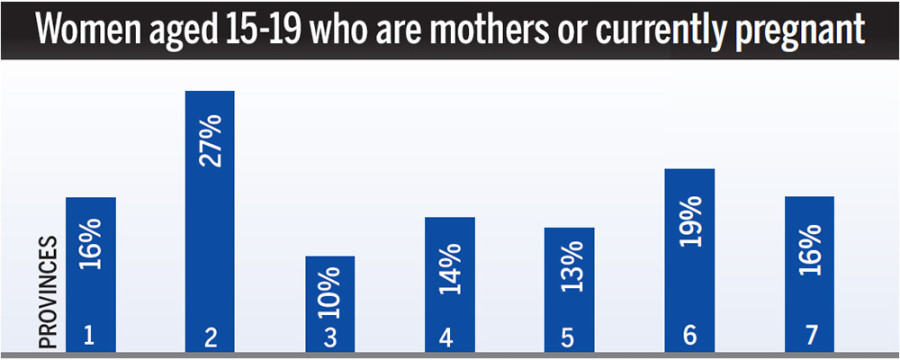Miscellaneous
Province 2 fares poorly in health indicators
As the provincial and federal elections near, candidates in Province 2 are faced with a dire public health reality in the eight Tarai districts.
Manish Gautam
As the provincial and federal elections near, candidates in Province 2 are faced with a dire public health reality in the eight Tarai districts.
The 2016 Nepal Demographic and Health Survey, a full report of which was made public on Monday, suggests that Province 2 fares poorly in health indicators including nutrition, teenage pregnancy, family planning coverage, newborn deaths, vaccination coverage and exposure of women to domestic violence.
The report calls for serious health intervention in the Madhes province. For instance, a mother from Province 2 gives birth to three children against 1.8 children in Province 3 while the national average is 2.3. Besides, 27 percent of the mothers aged between 15 and 19 years were found to be pregnant in the state.
In Province 2, only 65 percent of children between 12 and 23 months were
administered basic vaccination while the vaccination coverage in Province 4 is 93 percent. The basic vaccination includes BCG, measles-rubella, and three doses each of DPT-HepB-Hib and polio vaccine.
The condition is not good in the province in terms of neonatal and infant mortalities either. Thirty per 1,000 live births are likely to die within the first month while 52 per 1,000 live births are wasted before year 1. Also, only 45 percent of the births were delivered in a health facility.
“The DHS data provides us a baseline and basis for future comparison across different provinces,” said Ashok Shrestha, technical advisor to the 2016 Nepal DHS. “There might be a lot of associated socio-economic factors for the variances between the provinces. We will conduct a thorough analysis to understand the underlying causes.”
The DHS is an internationally recognised survey
conducted in more than 90 countries producing high-quality data on fertility, family planning, maternal and child health, gender, HIV/AIDS, malaria, and nutrition. The data from Nepal DHS has always been a vital tool to assess health programmes and opt for corrective measures.
The full report disaggregates data for the seven provinces for the first time. Health Ministry officials said they will review their programme in Province 2 and work in improving the health condition of the people in the eight districts.
“We will do our best to review and modify our programmes in the region,” said Dr Rajendra Pant, director general of the Department of Health Services.
Experts said low literacy rate contributed to much of the deterioration. “While literacy is vital, many children are not being able to study because of poor health. A holistic intervention is essential to correct the course,” said Dr Ramesh Kanta Adhikari, a health expert.




 18.12°C Kathmandu
18.12°C Kathmandu










